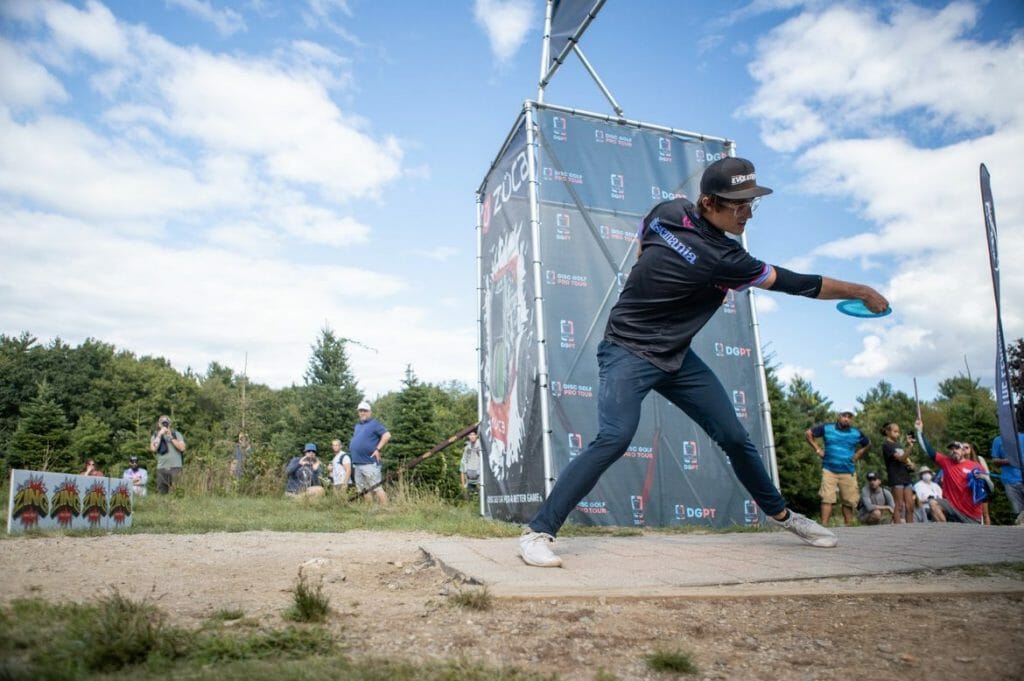Can we learn which holes really create separation?
October 1, 2021 by Frasier Liljestrand in Analysis with 0 comments

Disc golf has clearly enjoyed a surge in popularity in recent years, but it’s hard to identify what factors have most driven this growth. We have seen large improvements in the media coverage, but that could easily be a consequence of disc golf’s growth rather than a cause. The same could be said of the development of new high-quality courses or increased money in the professional scene. The improvement of statistics and data collection, however, has almost certainly not been a major cause of this growth. I can’t imagine any new player would be drawn to disc golf because of data collected during professional tournaments. But for those of us already invested in the sport, statistics can truly enrich our playing and viewing experience.
UDisc has developed a suite of statistics that focus on each individual player, tracking fairways hit, scramble percentage, putting percentages, etc. Players now have massively more data available to them now than even a decade ago, but the data is only useful if it can be applied. I don’t know to what extent professional players have used these statistics to inform their practice or tournament play. Personally, I have found the statistics difficult to use strategically. When I track all my stats on UDisc, it only reveals that I am worse than the professionals in every statistical category. Thank you UDisc, I now have quantitative data of my own shortcomings, but I don’t know the best way to improve. I don’t know if I am better off working on my putting, developing a stronger forehand, increasing my distance, or practicing throws through tight gaps. Clearly improving any or all of those things would make me a better player, but I would like some basis on which to prioritize my efforts.
One perspective that may help answering some of these questions is switching the focus. Rather than track statistics for a single player through a tournament, instead we can look at the properties of a single hole. Some holes are naturally shaped to favor forehands or backhands, longer holes favor powerful throwers, and wooded holes favor players who can control their angles. The nature of the hole determines which skills are most important.
There would be no point in practicing rollers if you only played rocky courses where they can’t be thrown. Similarly, I don’t want to spend the time developing a grenade shot if I’m never in a situation where I would need it. Every hole on a disc golf course tests some set of skills, and I want to know which holes are most important to achieve a better score, and by extension, which skills are most important to develop.
One goal for a course designer is to develop holes that are skill testing, where better players will tend to succeed and worse players will tend to struggle. A designer has many tools to do this, designating OB, lengthening a hole, changing elevation, adding obstacles, etc. Each challenge requires a different skill to overcome. Even the most repetitive hyzer-fest courses around still bring some variety from hole to hole. Each individual hole will, then, be more or less successful at testing the skill of the players. For some holes, the best players will be able to prove themselves, and they will very likely to birdie or eagle while worse players bogey. For other holes, the range of possible outcomes will be compressed — the best players will separate themselves only slightly or maybe not at all.
At an extreme, if a hole is truly random, if the worst players are just as likely to succeed as the best, then that hole may as well not exist. Its outcome would not in any way predict the result of the tournament. That also means whatever skills such a hole requires would be less important to practice. If the best players score the same as the worst, then there is no value in improving.
So that brings us to Maple Hill.
Arguably more than any single course on tour, Maple Hill has a huge variety of hole types, requiring the largest variety of shots. A full round through Maple Hill will test the entire gambit of skills required to be a professional disc golfer. Maple Hill is sometimes described as a course full of signature holes, but even for one of the world’s most highly rated courses, it can’t possibly be true that every hole is equally important. Playing some holes successfully should have a strong bearing on the outcome of a tournament while other holes are less critical. After watching this year’s MVP Open, I wanted to know which holes most strongly determined the outcome. Focusing on those holes would give players a better sense of which skills to hone and perhaps give designers inspiration to build better courses.
What Makes a Good Disc Golf Hole? A Statistical Analysis of the MVP Open is only available to Ultiworld Subscribers
Already have a subscription? Log in
Whether you visit Ultiworld for our reporting, our podcasts, or our video coverage, you can help us continue to provide high quality content with a subscription. By becoming a subscriber, not only do you receive benefits like exclusive articles and full article RSS feeds, you also help fund all of Ultiworld's coverage in general. We appreciate your support!